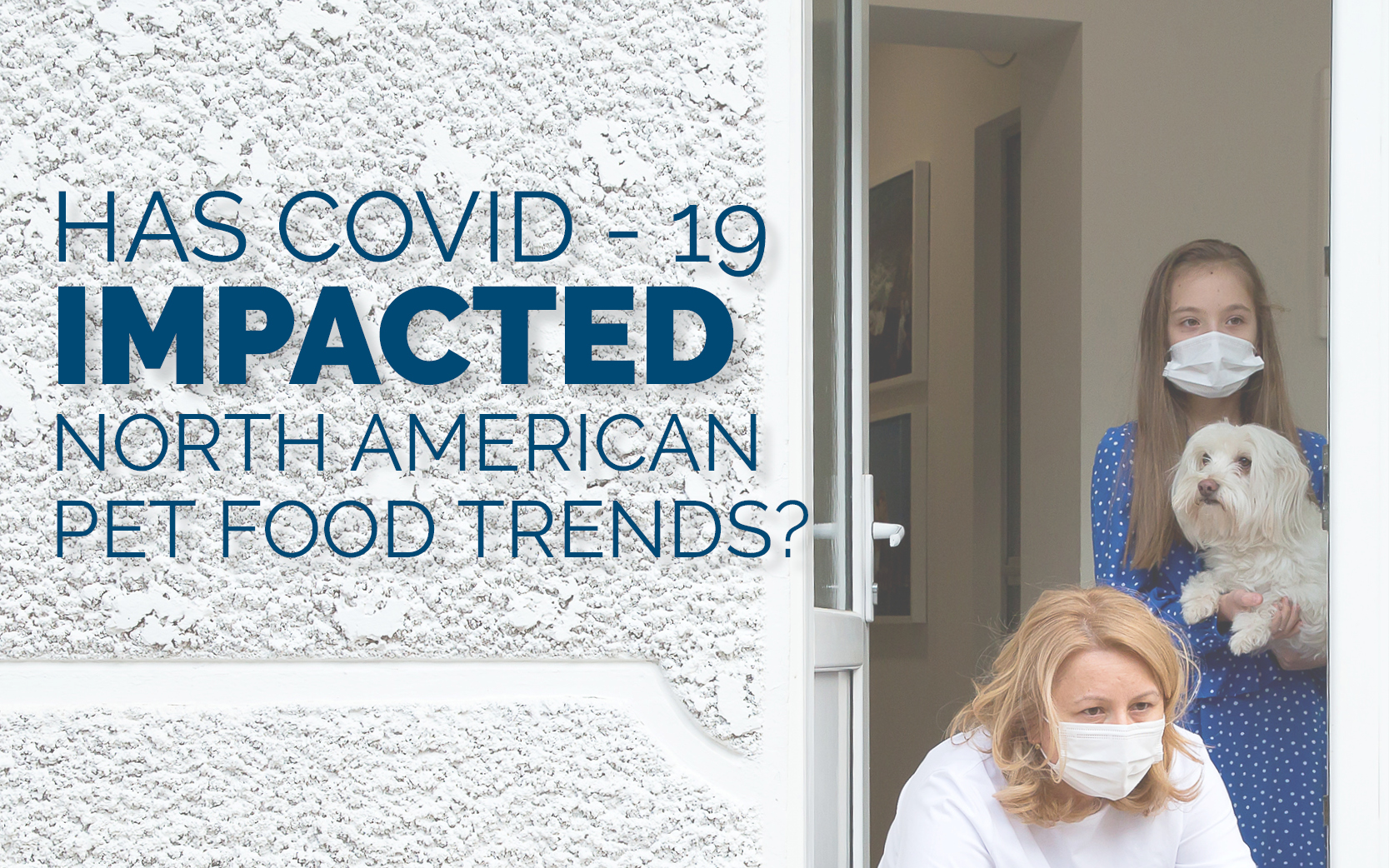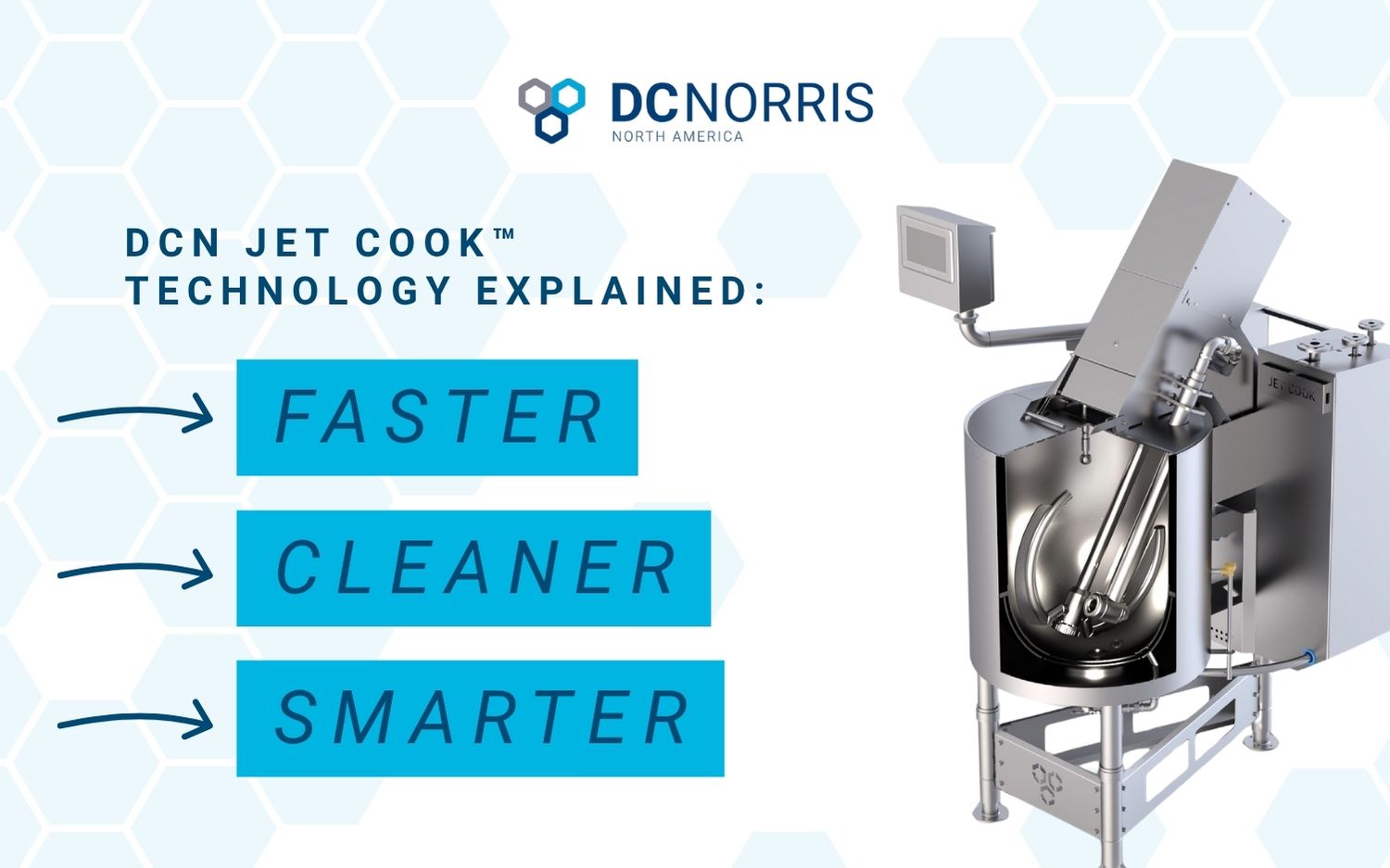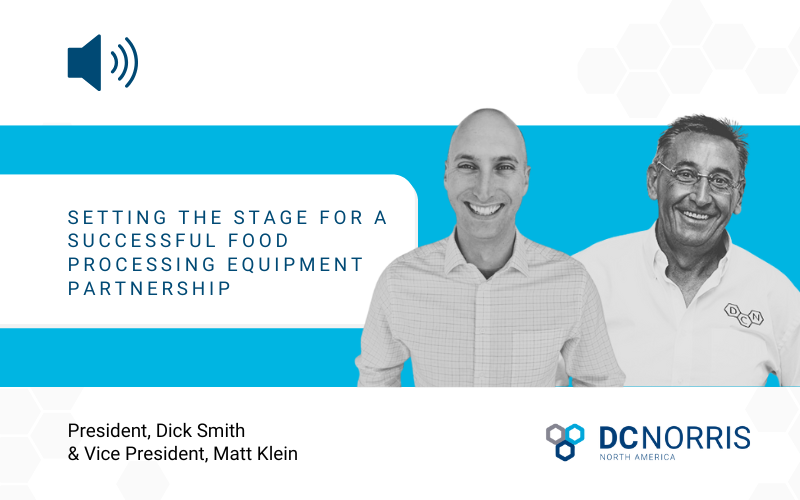In 2019, US pet food sales hit $36.9 billion according to a report by APPA. That total, led by dog and cat food, is anticipated to increase by four percent (4%) in 2020.
Now five months into the year, North America is neck-deep in an unprecedented plot twist as the globe reels from the continuing spread and impact of COVID-19. We’re all wondering if and how the novel coronavirus will impact the US pet food trends anticipated to contribute to the four percent (4%) growth in 2020.
To begin to answer that question, let’s look at what a few of the leading US pet food trends were in 2019.
2019 US Pet Food & Treat Trends
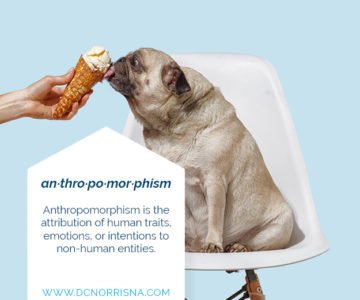 1) Continued Humanization of Pets (Anthropomorphism)
1) Continued Humanization of Pets (Anthropomorphism)
From fashion to CBD supplements for pets; North American dog and cat parents have been steadily marching towards the increased humanization of their pets for the better part of a decade. But 2019 marked a pronounced trend in pet food and treats. As North America’s food scene turned a ‘woke’ eye towards nutrient density and high-quality ingredients, pet owners demanded the same for their beloved companions.
A far cry from the days of a few brands of dry kibble, pet parents now have seemingly endless humanized pet food options that reflect their own personal tastes and preferences from oven-roasted chicken to grandma’s pot pie. Food quality matters just as much for pets as it does for humans and in 2019 pet parents purchased products that resembled that which they would buy and eat themselves.
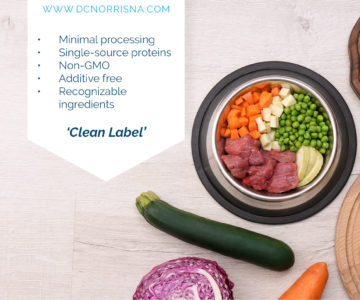 2) Clean Label
2) Clean Label
‘Clean eating’ reached new heights in human food demand in North America in 2019 and naturally, pet food followed. Demanding more than ‘natural’ claims, pet food, and treat buyers took to reading labels scrutinously. Buying trends show that pet owners were in search of minimally processed products, single-source proteins, non-GMO, organic, additive-free, by-products free, humanely-sourced, recognizable ingredients. And when it comes to the ingredient list, length matters. Pet owners are in search of short ingredient lists on their pet food and treat products – just as they are for their own.
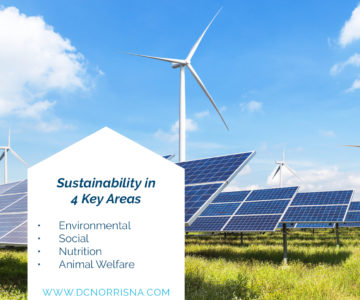 3) Environmentally Friendly & Sustainable Production
3) Environmentally Friendly & Sustainable Production
North American consumers look for sustainability in four key areas (for their pet products and their own): environmental, social, nutrition, and animal welfare.
In 2019, consumers started to ‘put their money where their mouth is’ and shop and buy consumer and pet goods that reflect their interest in sustainability. We learned in an article by PetFoodIndustry.com that an EcoPulse survey conducted by the Shelton Group showed that 85% of US consumers think the average person should be taking steps to reduce their environmental impact. Further, 41% want to be viewed as someone who is taking such steps.
This made the demand for products with sustainability claims on their labels, and the prices pet owners were willing to pay for them, jump substantially in 2019.
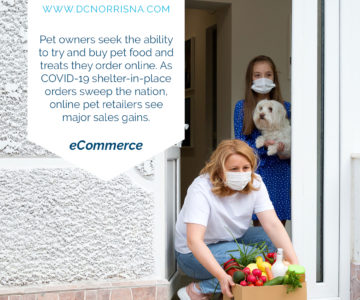 4) eCommerce
4) eCommerce
Brick and mortar stores played a large role in pet food and product purchases in 2019 but buying pet food and treats, specifically online, saw a good jump in adoption in 2019.
In fact, at Pet Food Forum 2019, as reported by PetFood Industry.com, the following ecommerce statistics were presented by Mike Black, VP of Marketing for Profitero:
- E-commerce pet food sales hit $3.6Billion in the US in 2018 showing 53% growth for the year, where brick and mortar growth was a much bleaker .7% growth.
North American pet food owners used the internet for their pet food and treat needs in 2019 because it offers easy price comparison, delivered-to-your-door convenience, access to products not available at their local stores, real-time reviews, and lower-risk sampling of new products.
Has COVID-19 Already Impacted Pet Food Trends in 2020?
While we’re still living through the coronavirus pandemic and as many as 1 in 4 North Americans are still under a shelter-in-place order; there’s no doubt America is seeing an increase in online pet food and treat sales. About 67% of American households have at least one pet. With the shelter-in-place orders, online pet food purchases made from the comfort of home surged. So much so, that a recent article on pymnts.com quoted online pet supply retailer Chewy.com with a need to hire 6,000 new employees to keep up with the increase in demand.
Are Americans Spending More or Less on Pet Food & Treats Now?
The initial pet food stockpiling sales surge most of North America saw in March 2020 seems to be giving way to a decline in April 2020. An anticipated, albeit, volatile cycle. But what happens as we near a seemingly inevitable recession here in North America?
Pet Food: Is It A Recession-Proof Industry?
Pet food and pet care have long been touted as “recession-proof”. Which seems to be accurate. After all, the $95Billion pet industry emerged after the financial crisis of 2008. Shelters and rescue organizations across North America have reported record increases in pet fostering and adoption amidst this crisis. This particular economic moment brings with it a new twist not seen in the Great Recession, the 2001 terror attacks or the 2008 financial crisis, though – a public health crisis and stay-at-home restrictions placed and enforced at the local, regional and national level. While this might negatively impact some businesses in the pet care and service sectors as more and more owners are at home with their pets; it still holds tremendous potential for pet food and treats suppliers and manufacturers.
Pet Food & Products Focused on Pet Health May Do Well During the Pandemic
Despite the struggling economy, there’s an unprecedented focus on health and safety right now. As we’ve seen in years past, particularly 2019, pet food and treat trends seem to follow or mimic human-food and supplement trends. As such, it looks likely that we might see the coronavirus pandemic cause an increase in sales of those foods and treats that are aligned with clean-label, sustainable, and nutrition-focused pet food trends.
What Are the Manufacturing Challenges for the Pet Food Industry Right Now?
Regardless of ingredient profile, pet food manufacturers are feeling the pinch of the pandemic as supply chains are disrupted, facilities endure illness-related closures, and in-store purchasing and demand decline.
For the near future, pet food manufacturers need to be able to source quality ingredients and produce high-quality pet foods with limited labor and waste.
Jet Process for Wet Pet Food Helps Manufacturers Do More With Less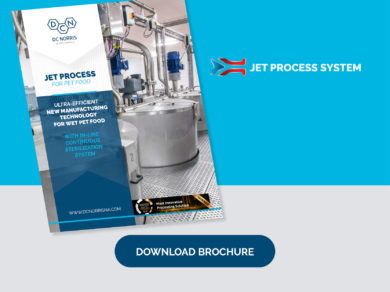
DC Norris’ Jet Process System produces ambient stable pet food without batch processing, traditional pressure vessels or retorts.
With Jet Process, one operator can produce 26,400 lbs per hour.
Traditional wet pet food processing uses multiple jacketed or pressure vessels, emulsifiers, heat exchangers and/or retorts to achieve high-temperature sterilization. This requires a large manufacturing footprint, regular maintenance, substantial energy resources, and annual pressure testing.
Jet Process eliminates multiple processing stages, minimizing square footage required and reducing energy use during production. It also eliminates the dangers of a caustic clean-up process for burn on contamination. The system can produce 26,400 pounds per hour and is operated by a single person, dramatically reducing labor costs.
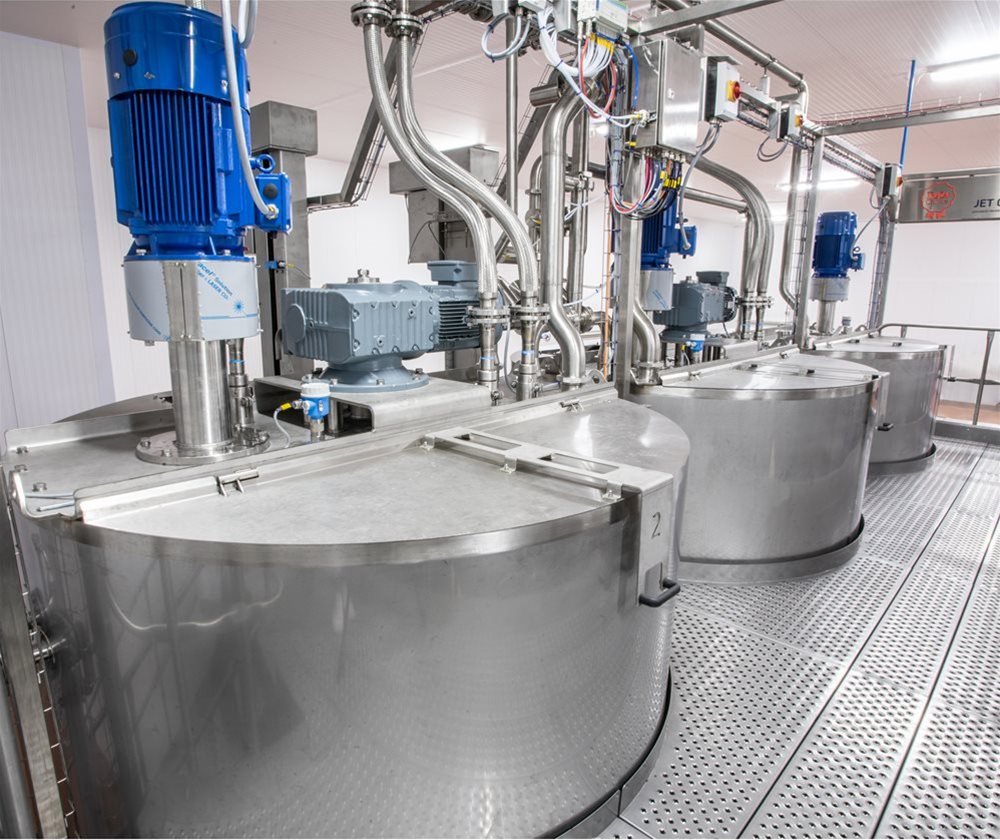 The Jet Process System is a revolutionary new solution for industrial wet pet food processing. Jet Process can cook, entrain (mix and hydrate hydrocolloids) and sterilize all-in-one complete system. The unique in-line continuous sterilization system reduces the number of processing vessels used, saving time and energy, while improving product quality and profitability.
The Jet Process System is a revolutionary new solution for industrial wet pet food processing. Jet Process can cook, entrain (mix and hydrate hydrocolloids) and sterilize all-in-one complete system. The unique in-line continuous sterilization system reduces the number of processing vessels used, saving time and energy, while improving product quality and profitability.
Get The Jet Process for Wet Pet Food Brochure
RELATED ARTICLE: How DC Norris Is Improving Wet Pet Food Manufacturing
